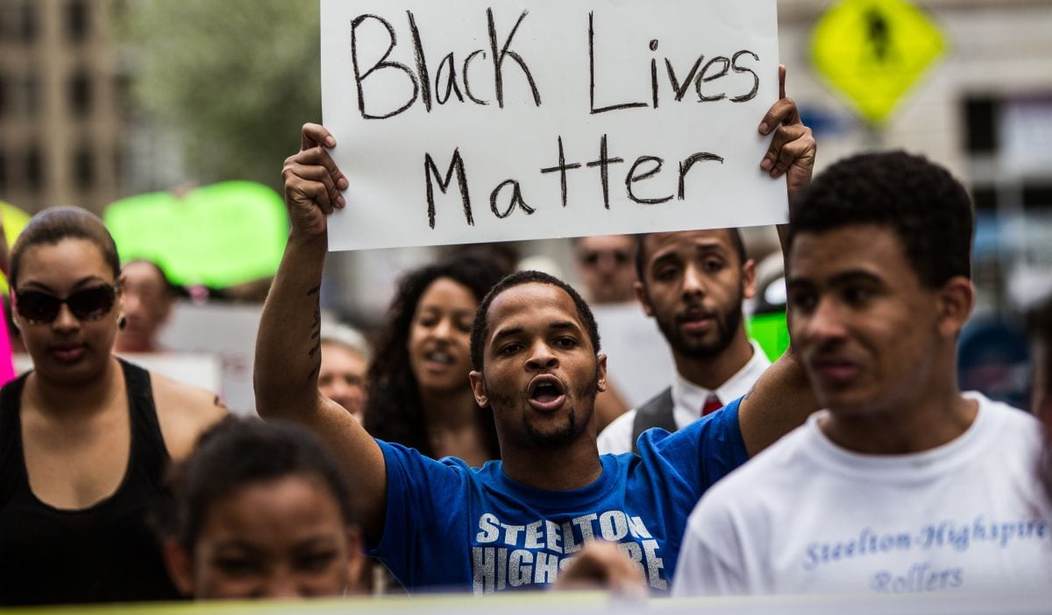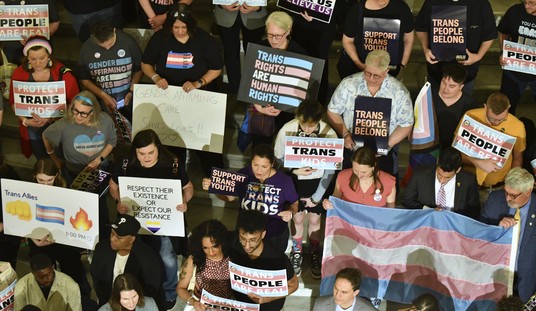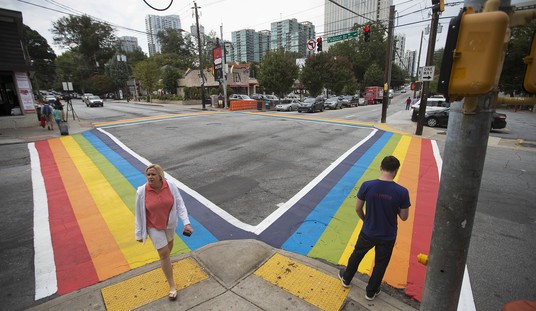There are plenty of problems with the culture of victimhood, but one of them is that when people start identifying themselves and others primarily as members of victim (or oppressor) groups, it doesn’t stop there. What happens next is that the victim groups start being sorted out according to a perceived hierarchy of victimhood – which group’s members are the bigger victims?
People who belong to multiple victim groups, moreover, set about claiming extra victim points (see “intersectionality”). And members of each victim group start splitting that group up into smaller groups, based on the premise that the group is actually, on further reflection, composed of several sub-groups, some of which are even more victimized than others.
Once begun, of course, this process has no natural end: the sub-groups split into sub-sub-groups and so on, so that eventually you arrive at the point where you’re back to the individual. Only instead of having an individual identity based on your own distinctive virtues, failings, interests, personality traits, and so on, you’ve got an identity that’s nothing but a checklist of all the groups you belong to – a checklist that determines your precise spot on the grievance ladder in relation to everybody else.
On August 2, a writer named Nico Dacumos ran a piece entitled “Should Light-Skinned People of Color Voluntarily Exclude Ourselves from People of Color Spaces?” His argument: “light-skinned or white-passing” people of color (POC) “get all the cool stuff that Black, Indigenous and People of Color (BIPOC) get,” including “[r]ichly artistic cultures,” “[a]ncient and powerful cultural and spiritual practices,” and so on, without having to experience such POC problems as high rates of incarceration, extrajudicial murder, and low self-esteem.
Dacumos wants us to know that he, as a light-skinned person of color (LSPOC), is deeply sensitive to this problem and has given it extensive thought. His conclusion: LSPOC should not be “entitled to be in all BIPOC spaces all the time.” What exactly does he mean by BIPOC spaces? All he says by way of explanation is to speak (approvingly) of “BIPOC divest[ing] from white institutions and ways of being and [seeking] self-determination and independence instead.” Presumably he’s talking about the kind of self-segregation practiced by college student groups that ban membership by, for example, whites or males. Obviously he thinks that’s terrific.
Well, terrific for BIPOC, anyway. One thing he makes clear is that, as far as he’s concerned, “it’s okay for BIPOC to gather but not okay for white people to form their own separate groups.”
Why? Because “when white people gather separately we end up with groups like the KKK, Stormfront and the Trump White House.” But it’s only fair for “darker-skinned BIPOC” to “desire spaces where they can process and organize around the unique issues they face because of their closer proximities to Black and Indigenous skin tones and facial features.”
If you think Dacumos is imagining an issue where it doesn’t really exist for anybody else, think again: in the San Francisco Bay Area, where he lives, he says he has belonged to “many groups and events organized exclusively for BIPOC,” and where “the issue of whether very light-skinned or white-passing BIPOC should attend has come up” every time.
Oh, what fun that must be! Yes, LSPOC may be hurt or offended when there’s talk of excusing them from BIPOC spaces, but darker-skinned BIPOC shouldn’t “have to deal with our growing pains of sensitivity, defensiveness, and fragility,” because they’re the bigger victims, and deserve “spaces that are safe from racist or colorist microaggressions.”
Dacumos goes on ruminating in this fashion for several more paragraphs. To read his entire piece is to be staggered by the thought of a human mind that has chosen to define the entire world by such categories. It’s hard to imagine anything more claustrophobic.
This isn’t the first time Dacumos has publicly chewed over this topic. In July, he wrote “5 Things Light-Skinned People of Color Say That Make Us Sound Like Racist White People.” He’s also written a piece called “A Case for White Relationship Divestment.” Here are a few gems from that one:
Self-determination/freedom/liberation for people of color begins by de-centering the needs and interests of whiteness and white people. … White people are like kryptonite to those of us trying to exorcise internalized white supremacy. … We are told everyday in every way … that we will fail and be miserable if we don’t allow white people to surveil and control our lives at all levels. … [I]f anything has stifled my imagination more than white supremacy and related oppressions, I have not yet encountered it.
Oh, the irony! Dacumos (whose contributor’s note, by the way, identifies him as the “lower-middle class and college-educated child of a Manila-born Ilocano and a Central California Chicana”) is obsessed with the idea that he’s oppressed, but doesn’t have a clue that he’s oppressing himself with all this suffocating, self-destructive label-think. He talks about his imagination being stifled, when in fact what’s stifling his imagination the most, by far, is his inability to escape the gravitational pull of group identity and the victimhood mentality.
In 2017, alas, Dacumos’s number is legion. Recently, after Adam Carolla testified before a marathon House committee hearing about restriction on free speech on American campuses, he returned to his podcast and marveled at the preoccupation with race on the part of the black congresswomen who had participated.
“When you get into hour three and every single comment from all the African American women is simply about skin color,” Carolla said, “you start thinking: do you just see the world this way and do you just think the world sees you this way? And if so, what a miserable existence!”
Yeah, that about says it. Another way of saying it is that if Martin Luther King, Jr., were still around, he’d go berserk at the spectacle of all these free people who – fixated on matters that he told all of us half a century ago to leave behind – have put themselves in chains.
Oh, one last fact about Nico Dacumos. According to LinkedIn, he’s a department head (!) in the San Francisco Unified School District.









Join the conversation as a VIP Member